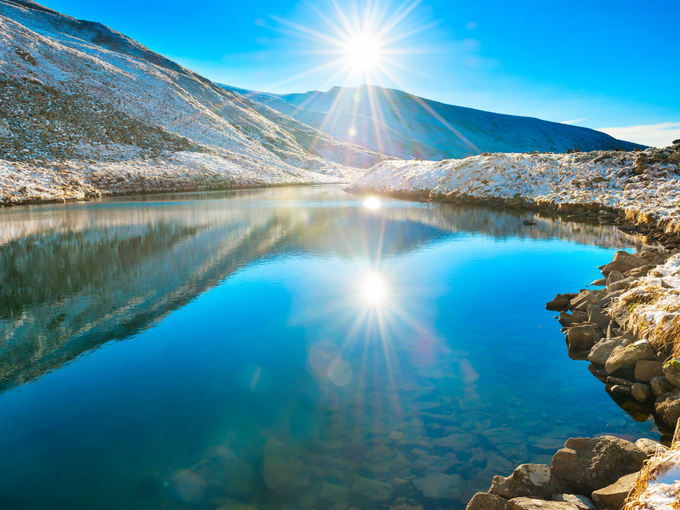Winter Sun Safety: Why It's More Important Than You Think

When dreaming of winter getaways, our minds often conjure images of snow-covered peaks and cozy firesides. However, there’s another element of winter that many of us overlook: the sun. Despite the temperature drop, the winter sun poses unique risks that can impact your health and enjoyment of outdoor activities. Let's dive into why sun protection is crucial during the colder months and how you can safeguard yourself effectively.
The Hidden Dangers of the Winter Sun
Reflection from Snow
Did you know that fresh snow can reflect as much as 80% of UV rays? This means when you're out skiing, snowboarding, or even just taking a walk in a snowy park, UV rays hit you twice—directly from above and reflected off the ground. This intense exposure can lead to unexpected sunburns, particularly on the face and under the chin, areas that many people forget to protect.
Thinner Ozone Layer in Winter
Winter often brings a thinner ozone layer, which normally helps block most of the sun's harmful UV radiation. This reduction can lead to higher UV exposure, even on overcast days when you think the sun isn’t a threat. This is a common misconception that leads many to skip sunscreen, leaving their skin vulnerable to damage.
High Altitude Challenges
Winter sports enthusiasts often face another risk: increased UV exposure at higher altitudes. For every 1,000 meters (about 3,280 feet) you ascend, UV exposure can increase by up to 10%. This means that skiers and snowboarders are not only battling the chill but also more intense sunlight, which can result in a higher rate of sunburns among winter sports aficionados.
Effective Sun Protection Strategies
Embrace UPF Clothing
One of the best ways to combat UV exposure is through UPF (Ultraviolet Protection Factor) clothing. UPF clothing is specifically designed to block out UVA and UVB rays. For winter activities, consider wearing a UPF-rated base layer that covers as much skin as possible. Such garments provide continuous protection without the need to reapply sunscreen to covered areas.
Comprehensive Facial Care
Your face is often the most exposed part of your body in winter. Wear a broad-brimmed hat or a ski mask that offers UV protection. Don’t forget about your eyes—UV-blocking goggles or sunglasses are essential to prevent snow blindness, a painful temporary loss of vision due to overexposure to UV rays.
Sunscreen Is Still a Must
It’s vital to use a broad-spectrum sunscreen with an SPF of at least 30, applying it to all exposed skin. This includes often-missed spots like the tips of your ears, the back of your neck, and under your chin. Reapply every two hours, or more frequently if you’re sweating or rubbing your face with a scarf or gloves.
Make Sun Protection a Winter Habit
Incorporating these sun safety tips into your winter routine can significantly reduce your risk of sunburn and long-term skin damage. Whether you're hitting the slopes or just enjoying a snowy day out, remember that the winter sun is just as deserving of your respect as the summer sun. Start viewing your UPF clothing and sunscreen as essential parts of your winter gear—just like your gloves and hat.
By understanding the risks and preparing adequately, you can enjoy all your winter activities with peace of mind, knowing that you're protected from the sneaky winter sun. Stay safe and enjoy the beauty of winter, sunburn-free!






